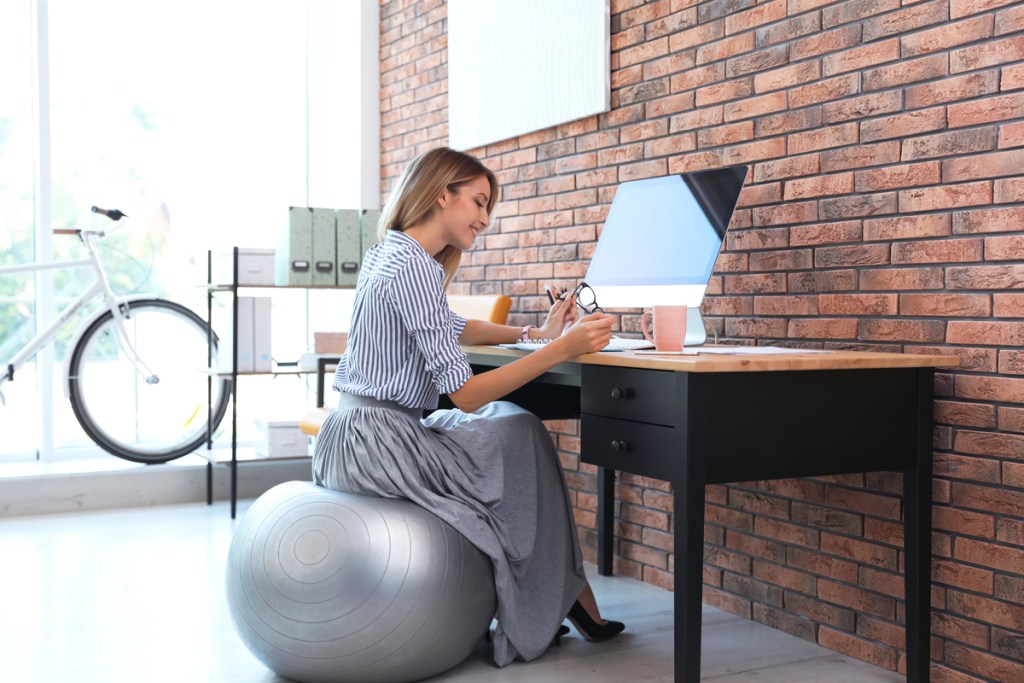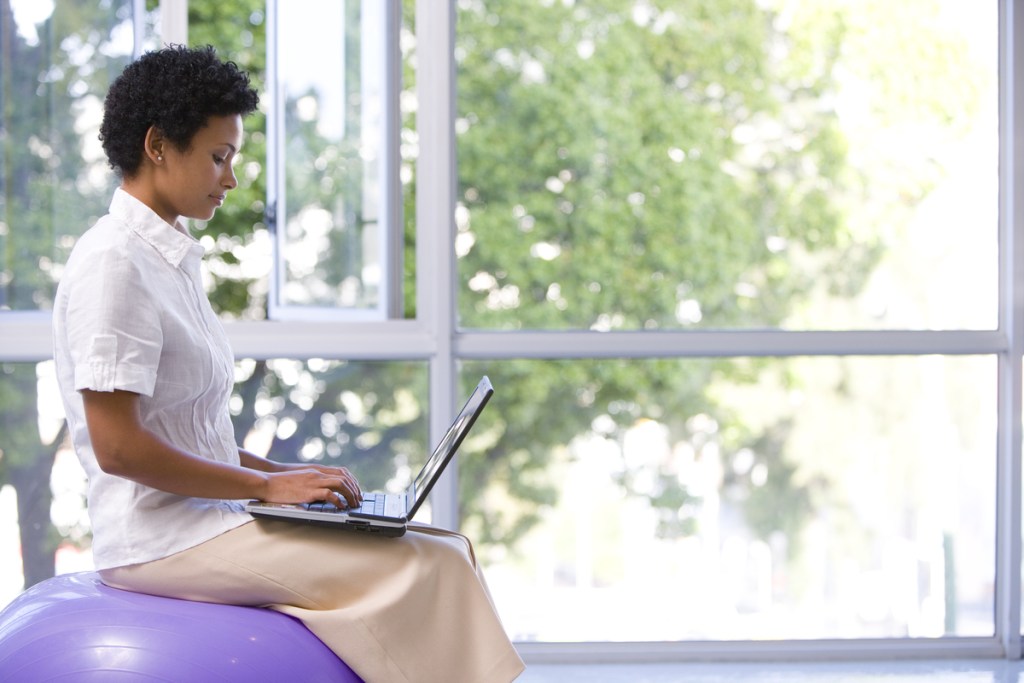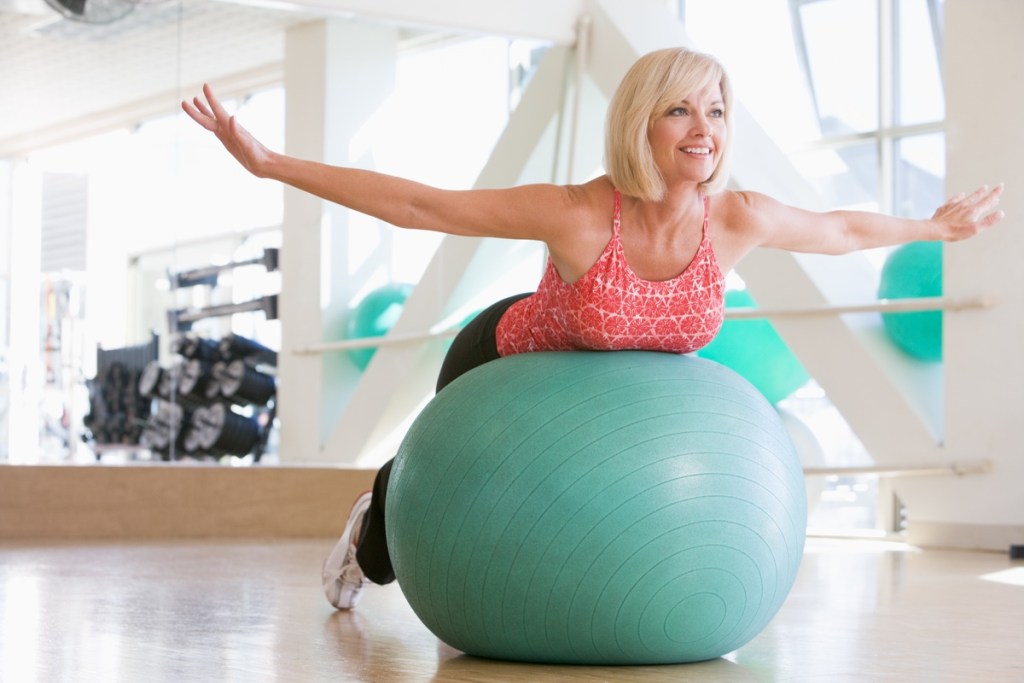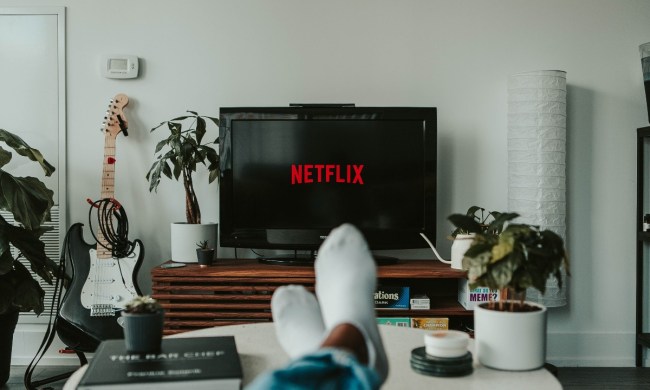
In this busy world of ours, time is a precious commodity no matter who you are. For many people, a workout at the gym might as well be a workout on the moon.
It’s a good thing, then, that there are so many creative minds out there, like the ones who came up with the stability ball, also known as a balance ball. Then someone had the presence of mind to suggest that balance balls could replace the standard office chair, allowing office workers to essentially pull double duty building muscles while completing their TPS reports.
But is that really a good idea? Or is it all hype and no substance? And in the worst-case scenario, could sitting on a balance ball while working actually pose a safety or health hazard? Just because it’s a trend doesn’t make it effective (or safe).
Here’s everything you need to know about balance balls in the office environment, so you can make the best decision for your own situation.
Benefits of balance balls
It’s in the name: stability balls work by strengthening your center of balance, also known as your core: abdominal muscles, pelvic area, and lower back. The goal is to improve posture and reduce pain in the core and beyond, as a strong core keeps the entire body stable.
Balance balls are used in exercise classes and YouTube videos everywhere because it provides a fun, low-impact alternative to more traditional core-strengthening workouts. All you need is a balance ball and your body weight to work far more than your core. A range of upper and lower-body exercises are easy to perform with this versatile piece of equipment.

But can they replace office chairs?
As great as balance balls are for exercise, the picture is a lot murkier when it comes to using one for sitting in front of a desk all day.
A 2016 commentary from several experts with the National Institute for Occupational Safety and Health (NIOSH) asserted that balance balls’ popularity as a workout accessory may be “unduly influencing suggestions to use these devices for workplace seating.”
The experts then concluded that a “preponderance of available evidence calls into question even the theoretical basis underlying the purported health benefits of the unstable sitting practice.” In plain English, that means there’s no proof that balance balls are doing any good as replacements for office chairs.
Further, one study on the matter found that there was no difference in muscle engagement between sitting on a stool and on a balance ball, meaning it’s not that effective as an exercise tool.
Although researchers were quick to note that there’s no overwhelming evidence one way or another, the NIOSH experts recommended that balance balls not replace office chairs.

Potential health and safety risks
Not only have balance balls been found not to hold a lot of benefits when used as office chairs, but also that there could even be health and safety risks.
According to the 2016 commentary, “safety considerations with stability ball seating need to be considered.” The team of experts noted that “anecdotal reports of loss of balance and falls from stability balls have arisen in web forums of ergonomics professionals.”
Ironically, since studies have shown that sitting on a balance ball does not significantly engage core muscles, and that balance balls include no back support, the practice can actually be bad for your posture or cause muscle pain.
Although balance balls are great when you’re actively exercising with them, those benefits don’t carry over when you’re using one as office furniture. On the contrary, experts have indicated that sitting on a balance ball while you work can actually pose health and safety risks.
While everyone cautions that more study is needed, the consensus on the matter at this juncture appears to recommend against using balance balls in place of your office chair. It looks like a situation where exercise and office equipment shouldn’t mix. After all, would you bring your office chair to your next workout? Some things should just stay in their own lanes.
BlissMark provides information regarding health, wellness, and beauty. The information within this article is not intended to be medical advice. Before starting any diet or exercise routine, consult your physician. If you don’t have a primary care physician, the United States Health & Human Services department has a free online tool that can help you locate a clinic in your area. We are not medical professionals, have not verified or vetted any programs, and in no way intend our content to be anything more than informative and inspiring.



